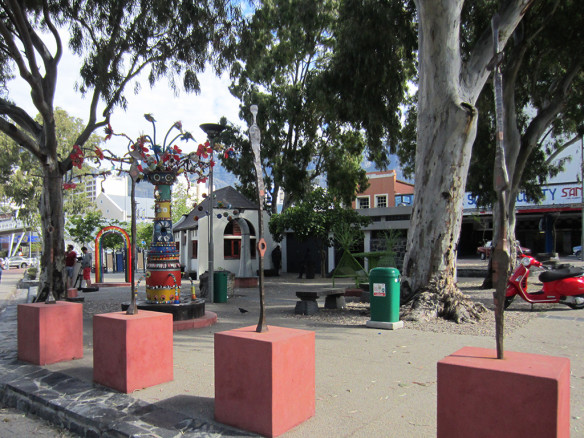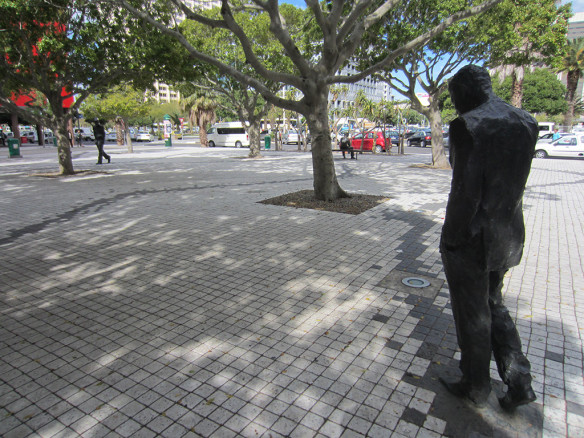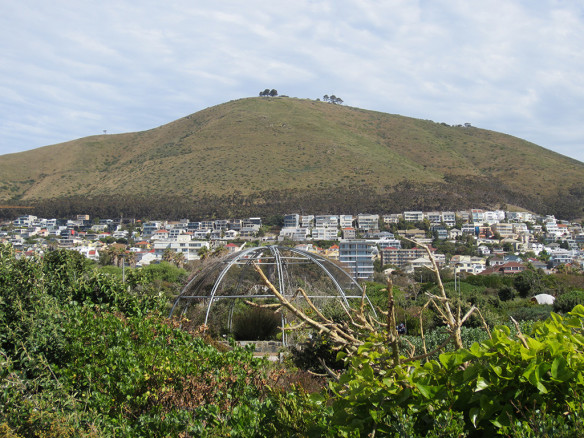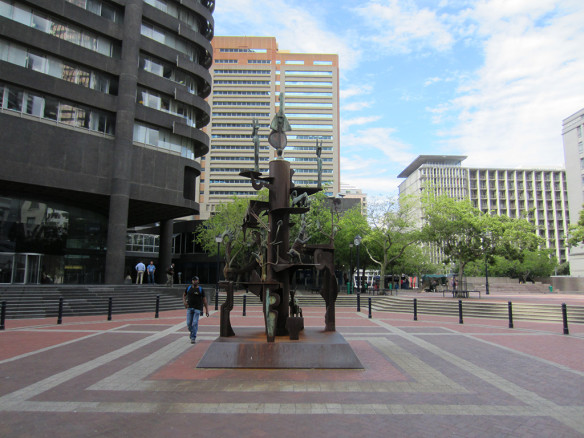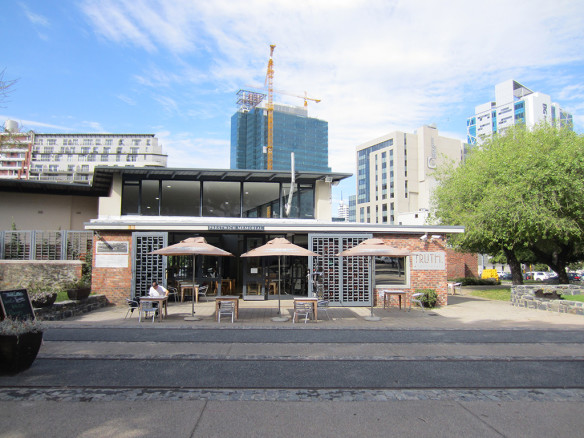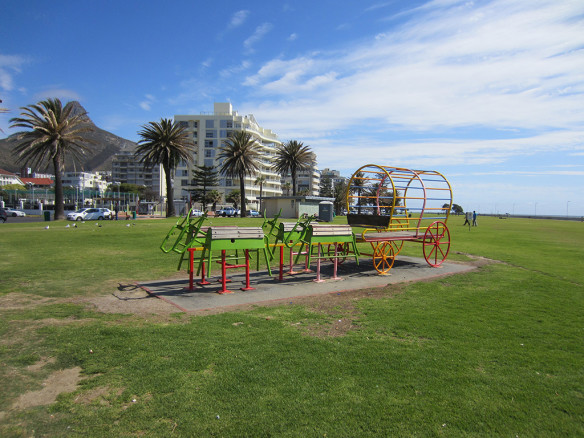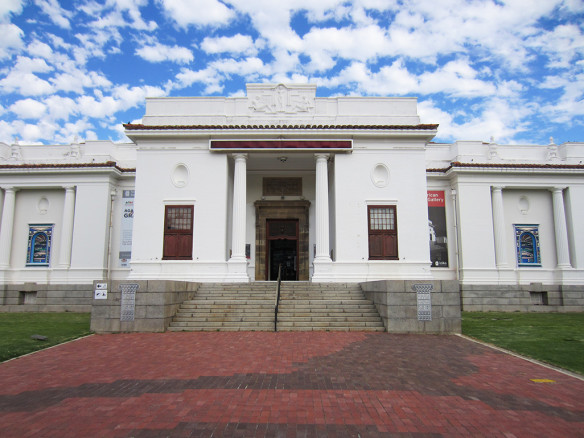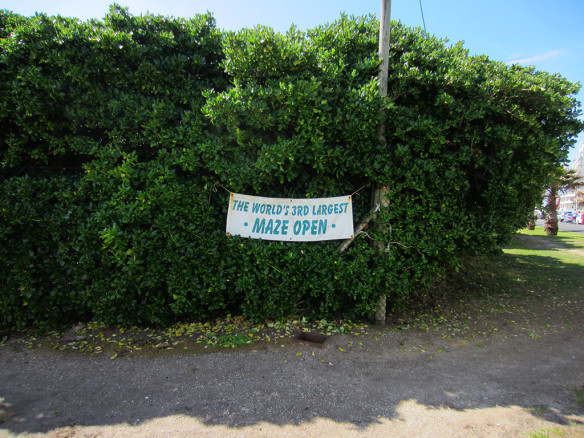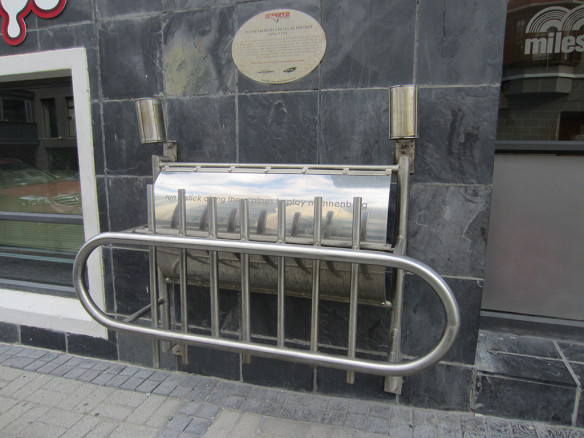Today I led a group of students on a walking tour taking in examples of public art and design, and other sites of interest in Cape Town. We started the walk with a psychogeographic quote by Michel de Certeau from ‘Writing the City’ in ‘The Practice of Everyday Life’ (1984):
The act of walking is to the urban system what the speech act is to language or to the statements uttered.
The course the students were on is SIT’s IHP Cities in the 21st Century: People, Planning, and Politics, which “examines the intentional and natural forces that guide the development of the world’s cities. It combines an innovative urban studies academic curriculum with fieldwork involving public agencies, planners, elected officials, NGOs, and grassroots groups in important world cities where exciting changes are taking place”.
This is a rough map of the course we took (still struggling with Google’s interface).
And these are some of the sites we visited:

